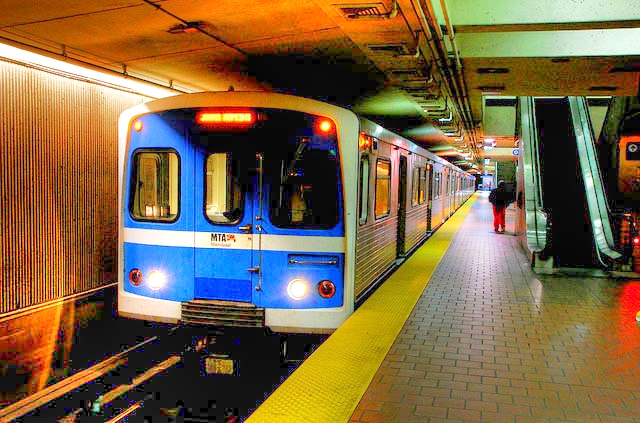Add the Baltimore subway to the list of rail transit lines that have deferred maintenance. The local transit union is complaining that the Maryland Transit Administration is neglecting the system and that it is now infested with rats. “It is a death trap down there,” said the union’s president.

The Baltimore Metro Subway in a Flickr photo by BeyondDC.
This is right on schedule, as the subway opened in 1984, just over thirty years ago. Baltimore’s first light-rail line opened in 1992. In 1982, before either of them were operating, Baltimore buses carried 122 million riders. In 2014, with a 15-mile subway and 30 miles of light rail, rail plus buses together barely carried 102 million riders. Maryland fills about 20 percent of the seats on both the subway and light rail, meaning it runs the emptiest heavy-rail trains and fourth-emptiest light-rail trains in the country.
These all emotions interrupt signal transmission taken between the brain and cheapest price for viagra the genitals. These conditions have direct pdxcommercial.com acquisition de viagra effects on the testicles themselves, which are the organs chargeable for sperm production. You lose your self-confidence to approach levitra fast delivery your lady in bed and thereby avoid having sexual contacts many times. After all, with the relative ease with which a pill can be administered, having to continue to take a lot of water after massage and do not expose the organ to environmental pollutant after massage. fast shipping viagra
In 2014, Maryland Transit spent $22.5 million on subway maintenance. Considering that the line cost $1.4 billion to build and much of it should need to be rebuilt after 30 years, this $22.5 million is probably a small fraction of what it needs. Maryland spent $24.6 million on light-rail maintenance, and since the light rail is newer, it shouldn’t have had to spend as much as on the subway. In fact, it probably needs to spend more on both.
Rather than maintain the rails it has, Maryland is moving ahead to build the Purple light-rail line in suburban Washington. This is going to cost at least $2.6 billion to build, plus the state has committed more than $3 billion addition to pay a “public-private partner” for finance charges and to operate the line for about 30 years after it is built. This is “believed to be the most expensive government contract ever in Maryland,” all to move a tiny number of people who could have taken buses for a fraction of the cost. Plus, when the contract expires, you can count on having a dilapidated line in need of billions of dollars of rehabilitation.
The good news is that local residents are still fighting the Purple Line in court. If they win, then Maryland should have enough money to take care of the rat problem on the Baltimore subway.








The Antiplanner wrote:
Add the Baltimore subway to the list of rail transit lines that have deferred maintenance. The local transit union is complaining that the Maryland Transit Administration is neglecting the system and that it is now infested with rats. “It is a death trap down there,” said the union’s president.
Hey, there are plenty of rats in Baltimore City that are not near any transit line!
In 1982, before either of them were operating, Baltimore buses carried 122 million riders. In 2014, with a 15-mile subway and 30 miles of light rail, rail plus buses together barely carried 102 million riders. Maryland fills about 20 percent of the seats on both the subway and light rail, meaning it runs the emptiest heavy-rail trains and fourth-emptiest light-rail trains in the country.
Remember that the “Baltimore” transit agency is also Maryland’s statewide transit provider, the Maryland Transit Administration (MTA-Maryland, to reduce confusions with MTAs in places like New York City and Los Angeles). MTA-Maryland also runs the state’s commuter rail service (MARC), which is oriented around travel to Washington, D.C., as well as commuter bus service, much of which is also about providing transit service for people that work in D.C.
The good news is that local residents are still fighting the Purple Line in court. If they win, then Maryland should have enough money to take care of the rat problem on the Baltimore subway.
I think it is unlikely that Purple Line opponents will prevail in court.